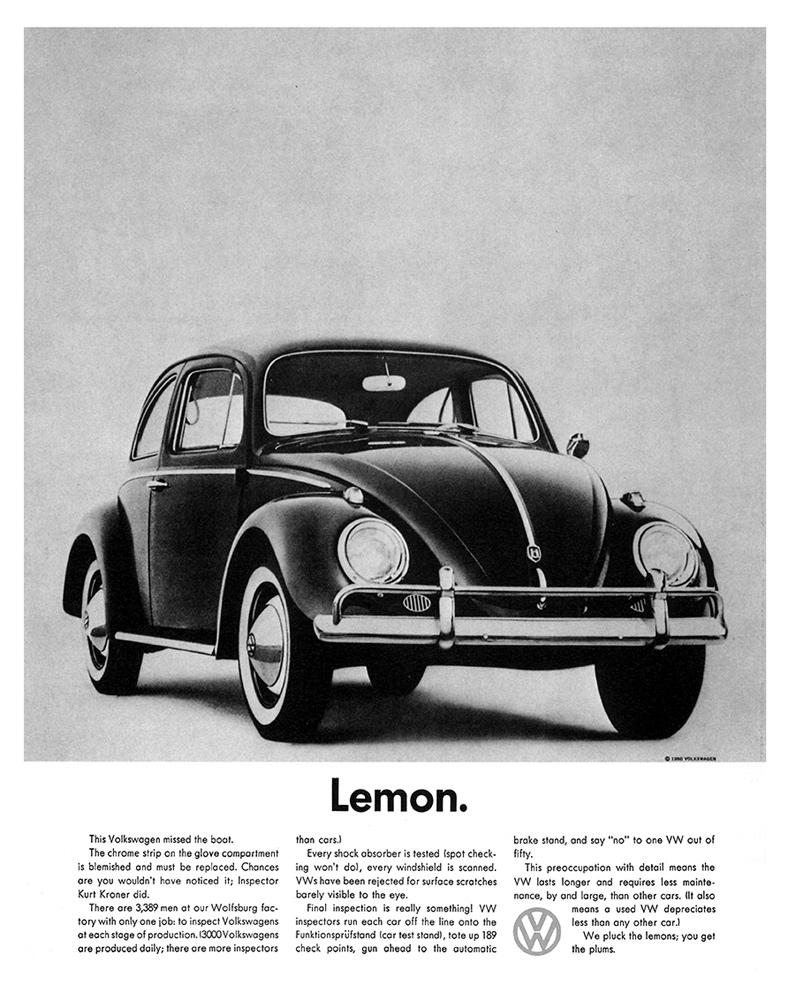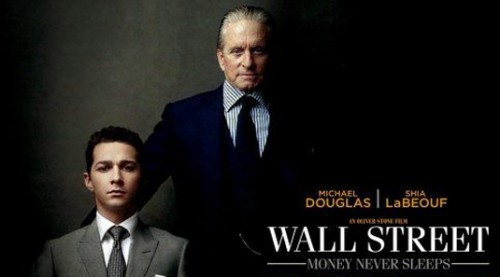For my final blog post, I decided to do something a little more fun and a little more visual. I have seen a number of creative business cards around the internet and looking at this blog post (and also this one) I chose some of my favourites. The idea of creating highly differentiated business cards allows people to market themselves as a unique product. Simply looking at one of these cards should give you a rough idea of what this person is about, even using the 4P’s. I hope you enjoy them!
Tim Horton’s Commercials
Most likely the premier fast food/coffee shop in Canada, Tim Horton’s is a place known by all. For some, it is a daily stop – others, like myself, only go when they want the occasional doughnut. All in all, it can be said that Canadians love this establishment. However, they seem to be a little lost with their marketing. Of course, everyone knows TH exists, so their marketing usually is just there to remind people to go more often, or to make them aware of a new product or discount. Last year, I specifically remember two Tim Horton’s commercials. One was about two people getting gifts that were swapped, and a man got a sweater with a cat face on it which was supposed to be very humorous. The other was two men in a garage spinning a wheel of doughnuts to figure out which one they would order that day. Since I watch a lot of hockey, these commercials became very familiar to me. This year I see that they have chosen to re-run the wheel of doughnuts commercial…for reasons I do not know. It is extremely stupid and almost makes Canadians look bad. I started to think of whether Tim Horton’s is just too lazy to make a new commercial or if they have done market research and determined that it is an effective advertisement. Looking at Justin’s blog, I saw a very touching Tim Horton’s commercial that seems a polar opposite to the awful commercials showcased last year. I have posted the commercial below and while I do believe it took some advantage of the earthquake in Haiti at the time, it is a fairly good advertisement.
Beatles On iTunes
On Tuesday, Apple had an exciting announcement planned. Usually, when Apple has something to say, people listen. Many thought it might be a new update to iTunes or its iOS software. However, the news we received was that the Beatles’ library would be coming to the largest music retailer in the United States. Now, because the Beatles are my favourite band and I know the words to all of their songs and have listened to them incessantly for the past 6 or 7 years, you would think that this announcement would excite me as it evidently excites Steve Jobs. Yet, this grand announcement really is of little importance. Many consider Apple to be a marketing powerhouse with carefully planned positioning and I tend to agree. Although with this Beatles announcement, it seems that they are crying wolf. The band’s entire work has been available in record stores since it was released – meaning that anyone who wants their music (which should be everyone) already has it. Sure, it’s great that Apple likes the Beatles and wants to release their music on their iTunes Store, but did it really warrant such a large announcement? If Beatles music had not been available on CD, then this would be huge. But with the fact that people can easily rip music off their CD’s and put it into iTunes anyways defeats the purpose of such an announcement. Apple is all about the big spectacle when it comes to marketing, they want all eyes on them; however, with their latest release (although it is a good one) they seem to have given the public something they already have.
Technology And Competition
 Having just signed up for a new phone contract with a Samsung Fascinate running Google’s Android operating system, I thought it would be interesting to look at the way technological advancements, particularly in the smartphone market, are being used to marketers’ advantage. Many people believe Apple to be a primary “pioneer” in the technology industry as they unveil new and exciting products to the masses. While this is true, I believe that their success lies in design and marketing. Apple computers and iPhones are not much more powerful than their competitors’ offerings, only slightly easier to use, and come with a hefty price-tag for the most part. That being said, they introduce new products, such as the iPhone to the masses. By designing extremely sleek devices with vibrant interfaces, Apple creates the “want” in the minds of consumers. People may that the the “ooh, shiny, I want that” type of mentality fades as we age, but to a lot of people it still matters whether we think about it or not. Secondly, Apple is very focused on marketing their devices in specific ways, the ways that they want their image to be seen. The fact that the iPhone 4 that “changes everything, again” had many antenna issues didn’t lead to an apology from Apple, merely a free bumper and an explanation that “other phones do it too.” To many people Apple is the hip, happening company that can do no wrong regardless of high margins on its products that consumers must pay for. Google on the other hand is very popular as a search engine, yet are their phones any good? Now, Google (much like Microsoft) does not make their own hardware, something that may also be a factor in Apple’s success as they do. Google Android phones are gaining marketshare more rapidly than iPhone and largely at the expense of BlackBerry. Many see Android as a geeky type of phone, yet I believe that Google is trying to change this image through marketing campaigns like the one we saw in class for Google Docs. Once people realize that it is just as easy to use as your typical smartphone, and actually comes packed with numerous extra features, I believe Android will take off even farther. However, Google mainly has to rely on the marketing campaigns of cellular carriers and its manufacturers like HTC, Samsung and LG.
Having just signed up for a new phone contract with a Samsung Fascinate running Google’s Android operating system, I thought it would be interesting to look at the way technological advancements, particularly in the smartphone market, are being used to marketers’ advantage. Many people believe Apple to be a primary “pioneer” in the technology industry as they unveil new and exciting products to the masses. While this is true, I believe that their success lies in design and marketing. Apple computers and iPhones are not much more powerful than their competitors’ offerings, only slightly easier to use, and come with a hefty price-tag for the most part. That being said, they introduce new products, such as the iPhone to the masses. By designing extremely sleek devices with vibrant interfaces, Apple creates the “want” in the minds of consumers. People may that the the “ooh, shiny, I want that” type of mentality fades as we age, but to a lot of people it still matters whether we think about it or not. Secondly, Apple is very focused on marketing their devices in specific ways, the ways that they want their image to be seen. The fact that the iPhone 4 that “changes everything, again” had many antenna issues didn’t lead to an apology from Apple, merely a free bumper and an explanation that “other phones do it too.” To many people Apple is the hip, happening company that can do no wrong regardless of high margins on its products that consumers must pay for. Google on the other hand is very popular as a search engine, yet are their phones any good? Now, Google (much like Microsoft) does not make their own hardware, something that may also be a factor in Apple’s success as they do. Google Android phones are gaining marketshare more rapidly than iPhone and largely at the expense of BlackBerry. Many see Android as a geeky type of phone, yet I believe that Google is trying to change this image through marketing campaigns like the one we saw in class for Google Docs. Once people realize that it is just as easy to use as your typical smartphone, and actually comes packed with numerous extra features, I believe Android will take off even farther. However, Google mainly has to rely on the marketing campaigns of cellular carriers and its manufacturers like HTC, Samsung and LG.
Another interesting field of technological competition actually lies in the auto industry. Right now we have cars that can park themselves and even some with TV’s in the headrests. Every auto manufacturer tries to one-up each other to have the newest technology in their vehicles. Also, with the increasing emphasis on “green”, research into hybrid and electric cars has become even more essential. Reading a friend’s blog post I learned more about the Nissan Leaf, an electric car that will be launched in 2011. This is a huge development for the auto industry. I believe it won’t be long before we see the other auto-makers contracting R&D to other tech companies to see what improvements can be made to battery life and charging. Who knows, maybe some day we will see Google or Apple branded vehicles. You never know.
Microsoft Spends $500m on Kinect
 I recently read a post on the Marketing Magazine website that outlined how Microsoft was about to spend $500,000,000 on marketing for their newly released Kinect peripheral for the Xbox 360. For those who are not familiar with Kinect (or its earlier codename Natal) it is basically a motion sensing camera and microphone that lets the user control and interact with games and applications on the system. You can pet fake animals or pretend to be an olympic runner without needing any controllers, just your body movements. While this seems like a great idea and revolutionary new technology, the early reviews haven’t been outstanding. Yet, I predict that just like the Wii, Kinect will take off soon enough once enough good games come out for it. Obviously Microsoft is a gigantic company and can afford to spend such a sizable sum, but is it necessary? I’m willing to bet that it is. A large amount of Microsoft’s Q3 2010 profits came from its gaming division and I believe that they want to expand it even further. Apple has succeeded in expanding its business from very few computers to becoming king of the portable world. Microsoft needs something like the Xbox 360 to dominate even further so that their business can diversify. Obviously they should not be worried about their software division – Window 7 sold 7 copies a second since release. However, this large marketing campaign may bring Microsoft back into the spotlight of being cool. Their successful launch of Windows Phone 7 along with the hugely popular new OS makes Microsoft a true leader once again. I don’t mind Apple as a company so this isn’t supposed to be a rant about how Microsoft is so much better…I really think they need to pull their socks up. In Q3 2010 Apple had a 10% US marketshare for computers…over the last few years it had been averaging around 5% with about 2% worldwide. I realize this post has turned into an analysis of Microsoft but I think it is important to understand some of the necessity behind spending so much on marketing for one product. Hopefully as the Xbox 360 and Kinect develop together, Microsoft can grow its marketshare in the console world and continue its successes in the PC and Mobile markets. Because it does not manufacture its own phones or computers, I think that Microsoft needs to put more emphasis on working with manufacturers to ensure their devices are good enough and have the same appeal that Mac products do. I <3 Microsoft but come on guys.
I recently read a post on the Marketing Magazine website that outlined how Microsoft was about to spend $500,000,000 on marketing for their newly released Kinect peripheral for the Xbox 360. For those who are not familiar with Kinect (or its earlier codename Natal) it is basically a motion sensing camera and microphone that lets the user control and interact with games and applications on the system. You can pet fake animals or pretend to be an olympic runner without needing any controllers, just your body movements. While this seems like a great idea and revolutionary new technology, the early reviews haven’t been outstanding. Yet, I predict that just like the Wii, Kinect will take off soon enough once enough good games come out for it. Obviously Microsoft is a gigantic company and can afford to spend such a sizable sum, but is it necessary? I’m willing to bet that it is. A large amount of Microsoft’s Q3 2010 profits came from its gaming division and I believe that they want to expand it even further. Apple has succeeded in expanding its business from very few computers to becoming king of the portable world. Microsoft needs something like the Xbox 360 to dominate even further so that their business can diversify. Obviously they should not be worried about their software division – Window 7 sold 7 copies a second since release. However, this large marketing campaign may bring Microsoft back into the spotlight of being cool. Their successful launch of Windows Phone 7 along with the hugely popular new OS makes Microsoft a true leader once again. I don’t mind Apple as a company so this isn’t supposed to be a rant about how Microsoft is so much better…I really think they need to pull their socks up. In Q3 2010 Apple had a 10% US marketshare for computers…over the last few years it had been averaging around 5% with about 2% worldwide. I realize this post has turned into an analysis of Microsoft but I think it is important to understand some of the necessity behind spending so much on marketing for one product. Hopefully as the Xbox 360 and Kinect develop together, Microsoft can grow its marketshare in the console world and continue its successes in the PC and Mobile markets. Because it does not manufacture its own phones or computers, I think that Microsoft needs to put more emphasis on working with manufacturers to ensure their devices are good enough and have the same appeal that Mac products do. I <3 Microsoft but come on guys.
The Cell Phone Market
Being in the market for a new phone, I have had the chance to research a number of different Canadian cellphone carriers and compare their various offerings. Following the lecture today where we talked about the Product Life Cycle and whether markets are introducing products, growing, mature or declining; I thought about these companies that I have been looking at. Specifically I have viewed the offerings from Fido, Rogers, Bell and Telus which I would consider to be the main carriers for Canada. While needs for different types of phones are growing, the overall market for cell phones in general seems to be mature. This means that the four carriers must differentiate their service enough to detract from the market share of a competitor. “The pie isn’t getting any bigger, so you have to steal from someone else” as it was put today. Looking at all of the carriers, if you want a smartphone with a basic data plan, the minimum you are looking at spending is $40-50. Overall, I did not find one company’s pricing strategy to be that much better than the others. Therefore I believe that three factors go into what makes a cell phone provider great. The first is customer service; many people experience difficulties with their phone or their bill, so it is important to have employees that care about your predicament and do everything they can to assist you. The second is reception; some carriers have bad reputations for dropping calls all over the place, and people value the fact that they can trust their phone to make calls. Third is selection; I believe that with a three-year phone agreement, consumers want a phone that they like, and most smartphones (with the exception of the iPhone and Blackberries) only come on one carrier exclusively. This allows them to market that phone extensively, like Bell’s Samsung Galaxy Vibrant or Telus’ HTC Desire. Although all of these evaluative criteria are helpful, in the end everything is subjective and it really comes down to what carrier you’ve heard is best and which phone you like the most. As long as each company continues to secure top of the line phones exclusively to their plans, it essentially evens the playing field and makes word-of-mouth and marketing the most important factors in differentiation.
Marketing Ethics
This is the ad I chose to do my COMM 299 marketing ethics speech on. The ad is by a public health organization called Truth. This ad comes from the “do you have what it takes to be a tobacco exec?” campaign. The labels on the jars read “an award winning smile” and “a brain that can rationalize the fact that your industry’s products kills someone every 6.5 seconds.” This provides a rather harsh criticism of the tobacco industry. While I certainly have no love for the tobacco industry or smoking in general, I believe that this ad is trying to tell consumers where their moral values should lie and therefore is somewhat unethical. I think in this day and age the bulk of the population knows that smoking is detrimental to one’s health – however this ad seems to be targeting the industry and its executives rather than the act of smoking. I don’t particularly like tobacco executives, yet I feel that smoking is a choice that many people make, and a great deal more simply lack the motivation to quit. I’m not saying it is an easy thing to stop smoking, just that it is possible for many people if they seriously wanted to. People that choose to consume tobacco products are the ones keeping these executives on the payroll, therefore I am a little confused as to why the campaign decides to lash out against these execs. Sure, their products provide harm to many people, yet as I said before it is a choice. Furthermore the selling and consumption of cigarettes is perfectly legal…if organizations like this feel that the killing is so awful maybe they should start petitioning for some sort of legislation against tobacco. While I definitely support an anti-smoking campaign..I believe the decision to target executives is rather unprofessional and would not be my choice for a large-scale ad campaign.
Wall Street 2
After recently seeing Wall Street: Money Never Sleeps, I began thinking about who the target audience was for this movie. First of all I would like to say that it was a decently entertaining movie, but hardly an epic film by any stretch of the imagination. So while not as good as its counterpart from 1987, Wall Street 2 is still worth a view for those interested. Many questions arise when thinking about the marketing for this film: why would the studio make a sequel to a 23 year-old movie? who will see it? how did they attempt to market the movie to appeal to more demographics? I can see two basic appeals of the film. One, people that saw and liked the original film from many years ago will want to see the sequel. As I saw in the theater, there were a number of older people – meaning that the studio had one generation covered. Second, using Shia LaBeouf as “the new Charlie Sheen” made younger generations identify with the movie. LaBeouf is a popular actor who has been on the Disney Channel, and in movies such as Indiana Jones and Transformers; therefore, many teens and young adults are familiar with his work. Therefore, a wide range of the target market is covered, which I would describe as both sexes from 18-60. While this is a broad range, I think that people that are interested in business, or possibly LaBeouf and Douglas, will want to see the movie – which narrows it considerably. For many films, the price and place are pre-determined – with only critics to provide any insight into the product before actually viewing the film. Therefore I believe that promotion is a critical part of the film industry, and it seems that for Wall Street: Money Never Sleeps (despite some mediocre reviews) the strategy of combining young and old makes for a good campaign.
Mad Men
Recently I have been watching AMC’s Mad Men quite and bit and it has made me think a lot about COMM 296. For those of you who don’t know, Mad Men is a show centering on the main character Don Draper who works at a New York ad agency. Nearly every episode the team at the agency pitches ideas to their clients which include many of the big names in industry at the time the show is set (the 1960’s). While I realize that advertising does not equal marketing, and although it focuses most on promotion of the 4 P’s, the other three come into play quite often. Clients often discuss where their product is going to be/currently is sold, their target market, and their pricing strategy. One recent episode featured an ad for Life cereal created by Draper that said Eat Life By The Bowlful – a play on the name of the product which was supposed to appeal to mothers buying the cereal, while a large picture of a child and an enormous bowl was meant to attract the attention of younger consumers. Just seeing some of these considerations made in the ad process are very interesting. While of course I do not think real marketing agencies are like what we see on Mad Men, it does make marketing fun to observe in an entertainment medium. Below I have included one interesting ad that was much talked about on the show.
Another aspect of the music industry that has grown rapidly is the creation of music videos. Again, from the early days of popular music up to the soundtrack of the modern world, a noticeable shift can be seen as focus drifts from vocal talents to the ability to “wow” visually. Following the concept that marketing is everywhere, the record industry spends millions on creating images for its artists. What may seem to be just a visual representation of music has become far more, with timing of videos and singles being precisely calculated for maximum exposure and profits. Music videos have been around for years, though they seemed to take a great leap forward with Michael Jackson. The videos that mark his early career set him apart from the average pop-star and demonstrate how genuinely interesting music videos can be. Since an artist or an album can be seen as a product that can have a price, place and promotion – music videos contribute to this marketing mix. Many recent videos seem to rely on sex appeal or a desirable lifestyle to attract attention and sales. This brings up another aspect of music videos that relates very closely with marketing; a number of videos created in the past decade have been viable showcases for numerous products such as shoes, watches or cars. Advertising has started to overrun every possible aspect of life and has slowly been seeping into music videos, only now bubbling over. Of course, not all modern music videos rely on underhanded tactics for viewership, some genuinely tell a story or show an artist performing the song – both perfectly acceptable. Once again, we must beware of the motives and interests behind creating music videos. While marketing and sales are definitely important, they can deteriorate the image of an artist not to mention the quality of their music. Indeed music is a great thing, just be award of the 4 P’s when watching a video and see if they are in the best interests of music fans, or if they are solely injected into the video to promote a “product.” Included below is perhaps the most innovative music videos ever – although I’m sure everyone has seen it already.











